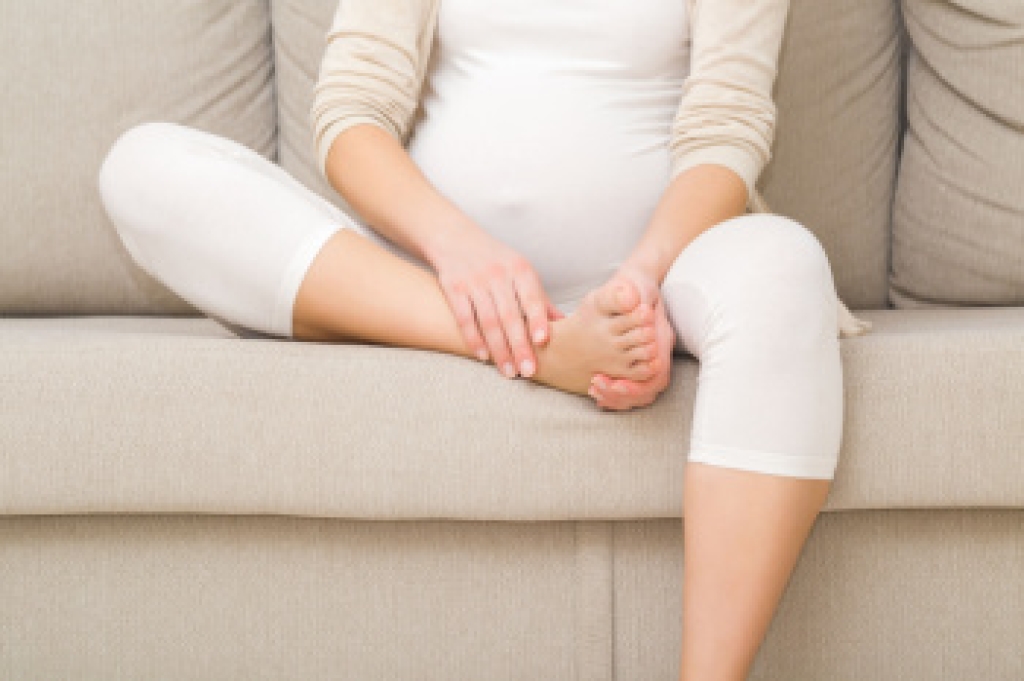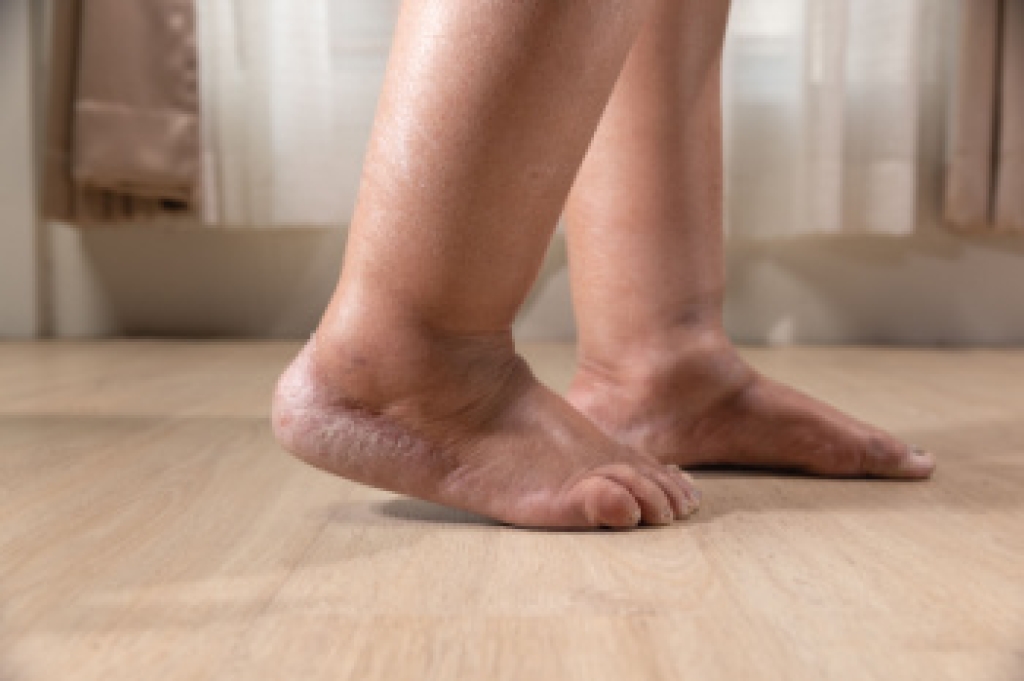
Pregnancy can lead to long-term changes in the feet because the body undergoes shifts that affect ligaments, posture, and weight distribution. As hormone levels rise, the ligaments the body, including those that support the arches, become more flexible. This increased looseness, combined with added weight, can cause the arches to lower and the feet to widen. Some people notice that their shoe size increases and does not fully return after delivery. These structural shifts may lead to new areas of soreness, changes in balance, or greater fatigue when walking. Wearing supportive footwear, shoe inserts, and gentle strengthening can help maintain comfort as the feet adapt. A podiatrist can evaluate any lasting changes, provide recommendations for support, and address conditions that may develop as a result of pregnancy-related foot changes. If your foot discomfort continues after childbirth, it is suggested that you see a podiatrist for an evaluation and treatment options.
Pregnant women with swollen feet can be treated with a variety of different methods that are readily available. For more information about other cures for swollen feet during pregnancy, consult with one of our podiatrists from Brondon Foot and Ankle. Our doctors will attend to all of your foot and ankle needs.
What Foot Problems Can Arise During Pregnancy?
One problem that can occur is overpronation, which occurs when the arch of the foot flattens and tends to roll inward. This can cause pain and discomfort in your heels while you’re walking or even just standing up, trying to support your baby.
Another problem is edema, or swelling in the extremities. This often affects the feet during pregnancy but tends to occur in the later stages.
How Can I Keep My Feet Healthy During Pregnancy?
- Wearing orthotics can provide extra support for the feet and help distribute weight evenly
- Minimize the amount of time spent walking barefoot
- Wear shoes with good arch support
- Wear shoes that allow for good circulation to the feet
- Elevate feet if you experience swelling
- Massage your feet
- Get regular, light exercise, such as walking, to promote blood circulation to the feet
If you have any questions, please feel free to contact our office located in Centerville, OH . We offer the newest diagnostic and treatment technologies for all your foot care needs.




